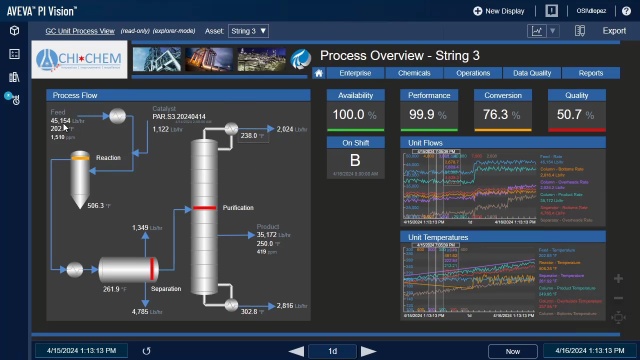Last Updated on February 5, 2025 by Caesar

Any business operating in a highly regulated industry knows that meeting compliance standards is not just a checkbox exercise—it’s a crucial part of maintaining trust, avoiding hefty fines, and ensuring long-term operation. Yet, many organizations struggle with regulatory delays that can stall innovation, product deployment, or service delivery.
This article will provide practical strategies to help you meet regulatory standards without delays. From streamlining your processes to leveraging the right technology, you’ll learn how to keep your business compliant and agile, even in the face of changing regulations.
Why Do Regulatory Delays Happen?
Before we break down the solutions, it’s important to understand why regulatory delays occur. Some of the most common causes include:
- Complexity of Regulations
Regulations vary depending on industry and geography. Policies are often worded ambiguously, making it difficult to understand what is required.
- Lack of Internal Processes
Companies facing delays often lack a well-organized system for staying on top of compliance deadlines or requirements.
- Insufficient Collaboration
Miscommunication between departments, especially between compliance teams and production units, can create bottlenecks.
- Over-reliance on Manual Processes
Businesses that don’t use automation are at risk of human error and delays due to slow workflows.
Strategies to Meet Regulatory Standards On Time
The good news is that implementing a few strategic practices can revolutionize how you handle compliance. Here’s how to overcome those regulatory roadblocks:
1. Stay Ahead with Proactive Planning
Regulations are constantly evolving. Rather than scrambling after changes are implemented, adopt a proactive approach. This means:
- Regularly reviewing upcoming legislative changes relevant to your industry.
- Staying connected with industry-specific regulatory bodies to understand trends.
- Establishing a regulatory calendar to track deadlines and required filings.
For example, if you’re in the energy or manufacturing sector, software like AVEVA PI Historian enables businesses to store and analyze historical data effectively, ensuring you’re always audit-ready. Proactively leveraging data not only helps ensure compliance but also identifies inefficiencies in real time.
2. Foster Cross-Department Collaboration
When compliance is siloed, the likelihood of misalignment shoots up. Encourage open communication between departments to smooth out this process. Consider assigning compliance liaisons for each team to maintain updates, share insights, and coordinate tasks efficiently.
Teams that work together avoid repetitive errors and create a culture of accountability. For instance, involving your engineering and legal teams during product development can identify potential compliance barriers early.
3. Automate Your Compliance Workflows
Relying on manual processes is no longer sustainable in today’s fast-paced regulatory landscape. Automation tools can streamline routine compliance tasks, improve accuracy, and eliminate human error.
These tools can assist you by:
- Generating and submitting regulatory reports automatically.
- Monitoring regulatory updates and assessing their impact.
- Sending reminders about compliance deadlines.
Platforms integrated with AI and machine learning are especially helpful for identifying risks in advance, ensuring your business is prepared for audits or sudden inspections.
4. Conduct Regular Audits
Instead of waiting for external auditors, conduct internal compliance audits regularly. This ensures:
- Errors are caught and corrected early.
- Processes are reviewed, refined, and optimized for smoother performance.
- Your business remains compliant even as regulations evolve.
Set up periodic reviews with checklists tailored to your industry. These proactive reviews make it easier to address gaps before they turn into crises.
5. Invest in Training
Compliance is a collective effort, and your team needs to be on the same page. Conduct regular training sessions to ensure your staff understands the applicable regulatory requirements and how to meet them.
For example, train your marketing teams on advertising compliance standards, or educate your engineering teams on safety regulations. Making compliance part of your company culture will significantly reduce the risk of delays.
6. Leverage Industry Partnerships
Joining trade associations or working with consultants who specialize in regulatory compliance can provide valuable expertise and industry insights. These groups often share best practices or offer tools to help businesses interpret legislation without overwhelm.
Collaborating with compliance experts—such as third-party auditors or software providers—can also accelerate your path to meeting standards while freeing up internal resources.
Real-Time Benefits of Efficient Compliance
When your organization meets regulatory demands without unnecessary delays, the benefits go beyond avoiding penalties:
- Improved Reputation
Demonstrating compliance builds trust among customers, investors, and partners. It positions your business as ethical and reliable.
- Faster Time-to-Market
Products or services can hit the market on schedule, ensuring you maintain a competitive edge.
- Cost Savings
Proactive compliance reduces the risk of expensive fines, product recalls, or operational suspensions.
- Employee Satisfaction
Streamlined workflows minimize the stress of compliance crises, creating a more productive work environment.
- Future-Proofing Your Business
Meeting regulations efficiently prepares you to adapt to future rules with minimal disruption.
What’s Next?
Meeting regulatory standards doesn’t have to be a headache. By adopting proactive practices, leveraging automation tools, and fostering collaboration, businesses can not only ensure compliance but do so efficiently.
If your business faces compliance-driven roadblocks, now is the time to rethink your approach. Invest in the right tools and strategies to eliminate delays and streamline your workflows.
To see how tools like AVEVA PI Historian can help you automate compliance and prepare your business for the future, consider exploring its features today. Staying on top of regulations has never been easier.

